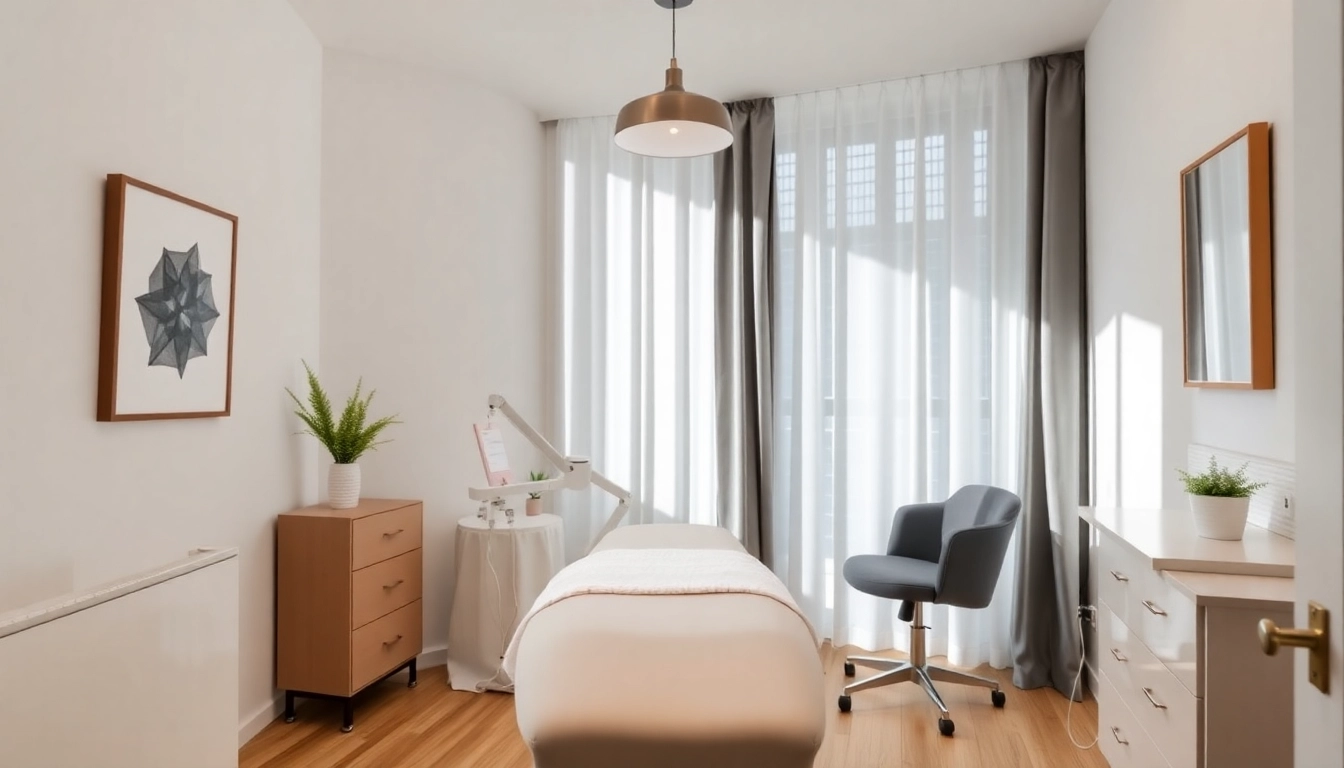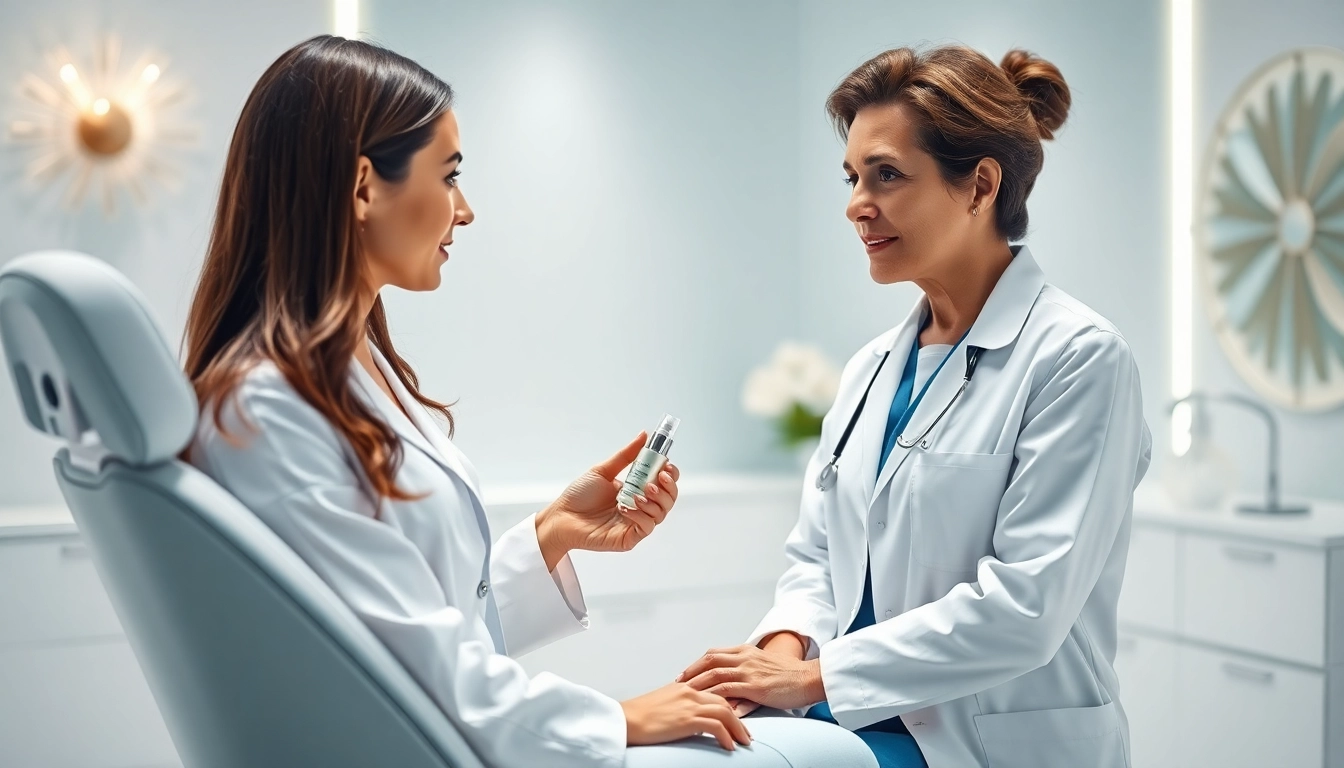Understanding Botox: The Basics
What is Botox and How Does it Work?
Botox, a brand name for botulinum toxin type A, is a neurotoxic protein that has garnered significant attention in both medical and aesthetic fields. Produced by the bacterium Clostridium botulinum, this toxin acts by blocking nerve signals to muscles, leading to a temporary reduction in muscle activity. In aesthetic medicine, Botox is primarily used to minimize the appearance of facial wrinkles by relaxing the muscles responsible for creating those lines.
The mechanism of action involves the injection of Botox into specific muscles, where it inhibits the release of acetylcholine, a neurotransmitter that signals muscles to contract. As these muscles relax, the overlying skin becomes smoother, reducing the visibility of fine lines and wrinkles. Botox-Zürich clinics utilize this principle for various cosmetic applications, enabling smoother and more youthful skin.
Benefits of Botox Treatments
The benefits of Botox treatments extend beyond aesthetic improvements and include a variety of medical applications. Here are some key advantages:
- Reduction of Fine Lines and Wrinkles: Botox is predominantly known for its effectiveness in treating dynamic facial wrinkles, such as crow’s feet, frown lines, and forehead lines.
- Non-Surgical Procedure: Unlike surgical facelifts, Botox injections are minimally invasive, requiring no downtime and allowing patients to resume regular activities shortly after treatment.
- Quick and Convenient: Treatments typically take 15 to 30 minutes, making them easy to fit into a busy schedule.
- Versatile Applications: Apart from aesthetics, Botox is used to treat migraine headaches, excessive sweating (hyperhidrosis), and even certain bladder disorders.
- Subtle Results: When administered by a skilled practitioner, Botox can enhance facial features without creating a distorted or “frozen” appearance, maintaining natural expressions.
Common Myths Surrounding Botox
Despite its popularity, several misconceptions regarding Botox persist. Addressing these myths is essential for helping potential patients make informed decisions:
- Myth 1: Botox is Unsafe. In reality, Botox is a widely studied and FDA-approved treatment when administered by qualified professionals.
- Myth 2: Botox Makes You Look Unnatural. Proper techniques and correct dosages ensure that results appear natural, without compromising facial expressions.
- Myth 3: Botox is Only for Older Adults. Increasingly, younger individuals are using Botox as a preventive measure to combat early signs of aging.
- Myth 4: Botox is Permanent. The effects of Botox are temporary, typically lasting three to six months, necessitating repeat treatments for continued effects.
Exploring Popular Botox Applications
Facial Areas Treated with Botox
Botox can be effectively used to target several areas of the face, each with its unique treatment approaches:
- Forehead Lines: Horizontal lines can be softened by injecting Botox into the frontalis muscle.
- Crow’s Feet: Botox is used to relax the muscles at the corners of the eyes, reducing the appearance of fine lines.
- Frown Lines: The glabellar region between the eyebrows can be treated to create a more relaxed expression.
- Bunny Lines: These are the lines that appear on the sides of the nose when smiling or scrunching the nose.
- Jaw Contouring: Botox can be injected into the masseter muscle for a slimmer jawline.
- Lip Flip: A small amount of Botox can be injected in the upper lip to enhance the lip’s fullness.
Specific Techniques for Optimal Results
Administering Botox for optimal results involves specific techniques that vary based on the targeted area and the desired outcome:
- Microdosing: Utilizing smaller amounts of Botox can provide more controlled results, minimizing the risk of a “frozen” appearance.
- Dilution: Adjusting the dilution of Botox can impact the diffusion and effectiveness, allowing for more subtle or more pronounced results.
- Injection Depth: Precise injection depths are crucial for targeting specific muscles and reducing unwanted side effects.
- Timing: Understanding the patient’s muscle movement and timing of injections can enhance results, especially when combined with facial fillers.
Combination Treatments with Dermal Fillers
To achieve a more comprehensive rejuvenation, Botox is often combined with dermal fillers. This synergistic approach addresses multiple concerns:
- Enhanced Volume: While Botox relaxes muscles to soften wrinkles, dermal fillers can restore lost volume in areas such as the cheeks, under the eyes, or lips.
- Balanced Aesthetics: Combining these treatments allows practitioners to create a harmonious facial aesthetic, enhancing both dynamic and static facial features.
- Customizable Treatments: This combination can be tailored to each patient’s needs, providing a more personalized approach to facial rejuvenation.
Your Journey to Botox-Zürich: What to Expect
Initial Consultation Process
Your journey towards Botox treatment typically starts with an in-depth consultation. This session is crucial for establishing your aesthetic goals and understanding the treatment process:
- Medical History Review: During your consultation, the practitioner will inquire about your medical history, current medications, allergies, and previous cosmetic procedures.
- Discussion of Goals: Clearly articulating your aesthetic desires will help tailor the treatment plan to your specific needs.
- Visual Assessment: The practitioner will assess your facial structure, skin elasticity, and areas of concern to recommend the best approach.
- Addressing Concerns: Feel free to ask any questions regarding the procedure, potential side effects, and expected outcomes.
Preparation for Your Treatment
Prior to receiving Botox, preparation can enhance the treatment’s effectiveness and minimize complications:
- Avoid Blood Thinners: It’s advisable to refrain from blood-thinning medications, such as aspirin or ibuprofen, for a few days before the procedure to reduce the risk of bruising.
- Hydrate: Drink plenty of water in the days leading up to the treatment to keep your skin hydrated and healthy.
- No Alcohol: Avoid alcohol for 24 hours before the treatment to minimize swelling and bruising.
Post-Care Instructions for Best Results
Following your Botox treatment, adhering to post-care instructions is vital for achieving optimal results:
- Avoid Touching the Face: Refrain from rubbing or massaging the treated area for at least 24 hours to prevent the toxin from dispersing to unintended muscles.
- No Strenuous Activity: Postpone rigorous exercises or activities for the first 24 hours to minimize swelling and bruising.
- Stay Upright: Remain upright for four hours post-treatment to ensure proper absorption of the product.
- Watch for Side Effects: Be mindful of any adverse reactions and report them to your practitioner if necessary.
Addressing Common Concerns About Botox
Pain and Discomfort During the Procedure
While some individuals may have concerns about pain during Botox injections, the procedure is generally well-tolerated. Most patients describe it as a slight pinch or prick, similar to that of a vaccination. To enhance comfort, practitioners can use fine needles and cooling techniques or a topical anesthetic. Understanding that discomfort varies by individual is essential, but most report minimal issues.
Longevity of Results and Follow-Up Treatments
One common question among prospective Botox patients is the longevity of results. The effects of Botox typically last between three to six months, depending on various factors such as individual metabolism, treatment area, and dosage. Following the initial treatment, many patients opt for maintenance sessions to prolong their results. Regular follow-ups are encouraged to assess and optimize outcomes over time.
Understanding Potential Side Effects
Like any medical treatment, Botox comes with potential side effects, albeit generally mild and transient. Common side effects include:
- Bruising: Small bruises at the injection site are common but usually resolve within a few days.
- Swelling: Swelling can occur but typically subsides quickly.
- Headaches: Some patients may experience mild headaches following treatment.
- Asymmetry: If the product spreads from the injection site, it could lead to temporary asymmetrical results.
If any side effects persist or worsen, contacting the practitioner for further advice and possible solutions is crucial.
Finding the Right Provider for Botox-Zürich
Qualities to Look for in an Aesthetic Practitioner
Selecting a qualified practitioner for Botox injections is essential to ensure safety and optimal results. Here are important qualities to consider:
- Qualifications and Experience: Look for providers with board certifications in dermatology or plastic surgery and significant experience with Botox treatments.
- Patient Reviews: Research reviews and testimonials from previous patients to gauge satisfaction and results.
- Consultative Approach: A good practitioner should prioritize patient education, providing comprehensive information about the procedure, expectations, and aftercare.
- Facility Standards: Ensure that the clinic adheres to high standards of cleanliness and safety.
Vorher-Nachher: Evaluating Reviews and Testimonials
Before committing to a Botox provider, reviewing before-and-after photos can provide insight into the practitioner’s skill and the results you can expect. Additionally, reading testimonials can help establish trust. Seek clinics that openly share patient results and provide a transparent overview of their work.
Consultation Tips for First-Time Patients
If you are considering Botox for the first time, it’s normal to feel hesitant. Here are some tips to maximize your first consultation:
- Prepare Questions: Write down any questions regarding the procedure, safety, or expected results.
- Be Honest: Discuss your medical history and any medications you are taking to help the practitioner tailor their approach.
- Set Realistic Goals: Understand what Botox can achieve and communicate your aesthetic objectives clearly.



